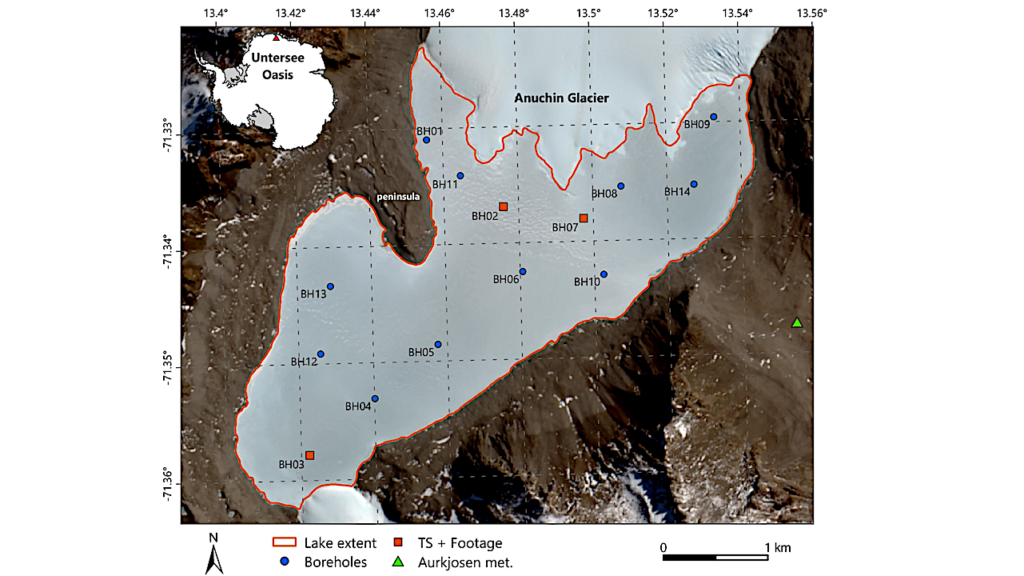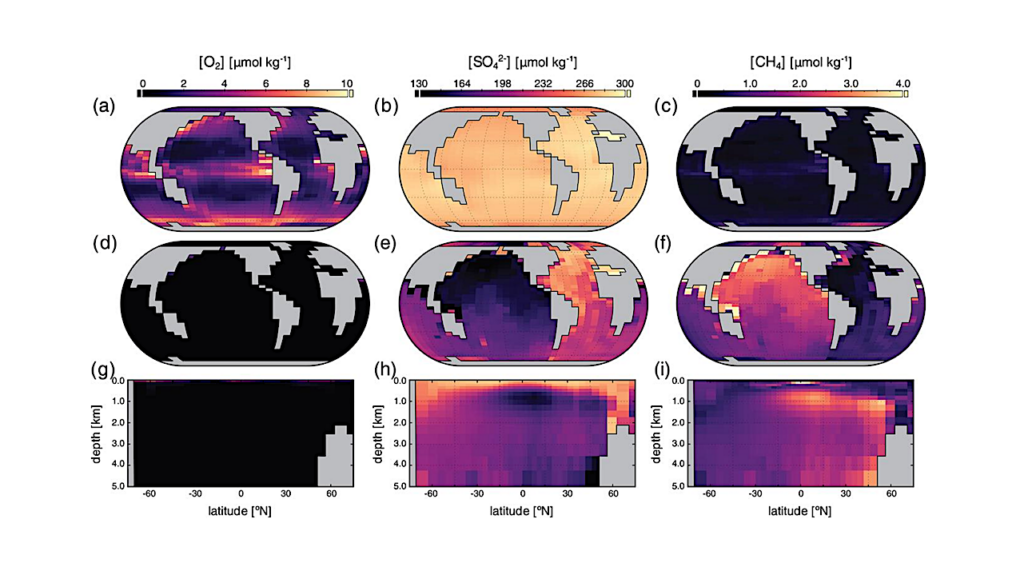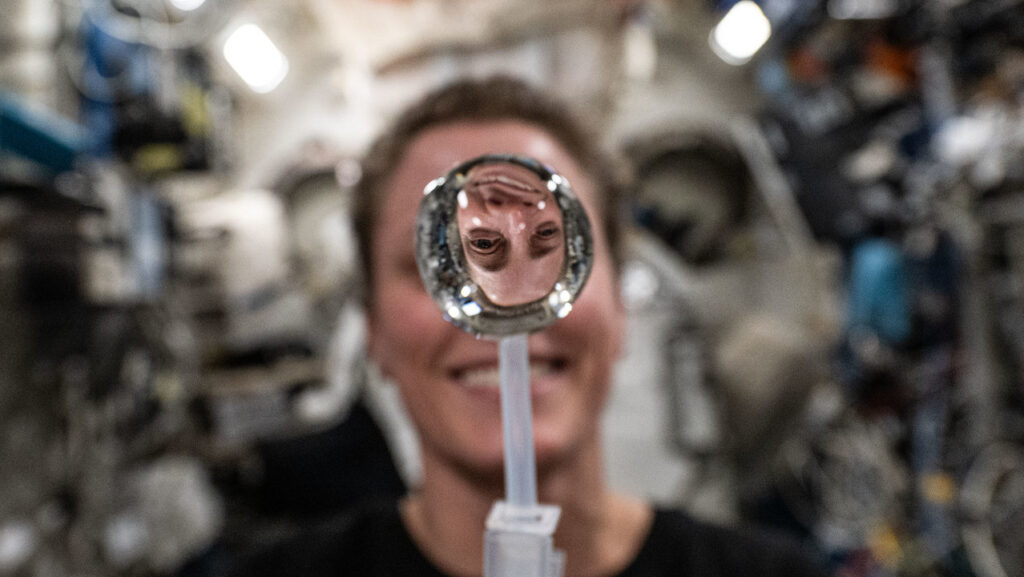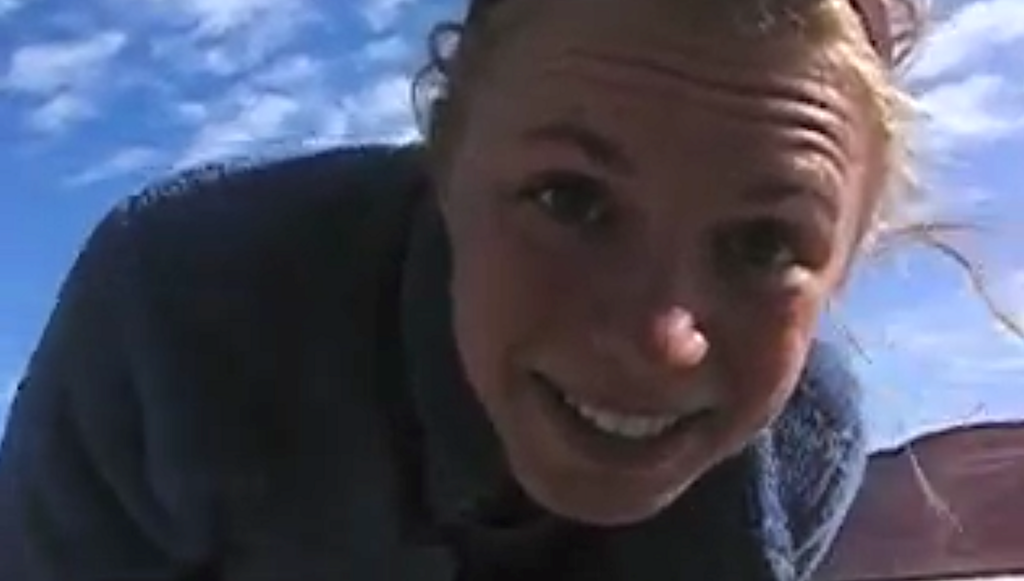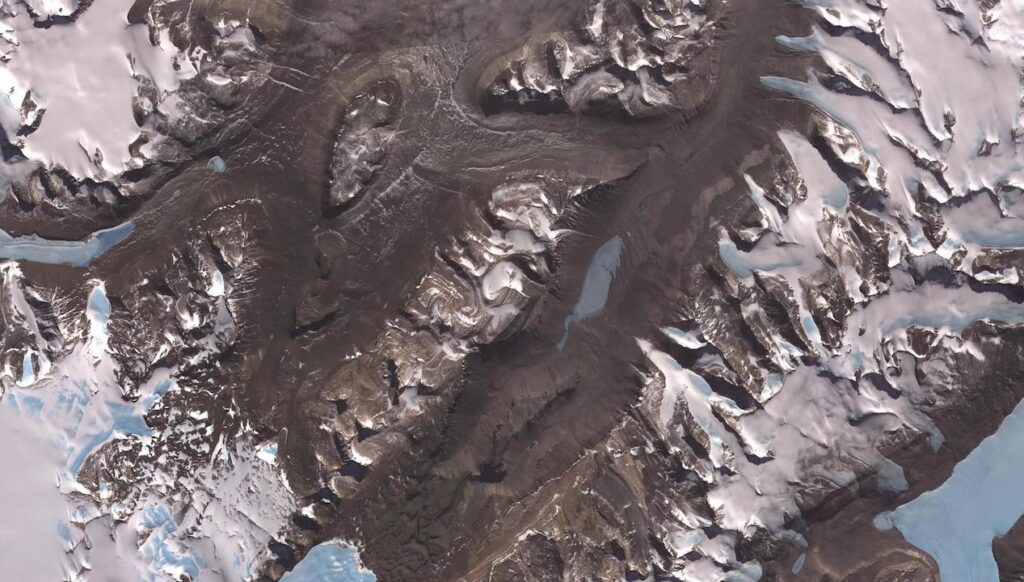Astrobiologist Dale Andersen Antarctic Status Report 6 November 2019: At Lake Untersee

Our traverse went well and we all made it to Lake Untersee safely.
The snowmobile ride to the lake was nice, we had great visibility, good contrast and it was partly sunny most of the way out with light winds, so perfect conditions for the trip. We have been busy the last couple of days establishing the camp and taking advantage of the good weather to get settled into the camp.
Right now we ar all inside our Mountain Hardwear Stronghold tent having dinner, the tent pretty toasty and everyone in good spirits. Another day or two of camp work and we can begin the science.
Lake Untersee, Wikipedia
“Lake Untersee (German: Untersee, “Lower Lake”) is the largest surface freshwater lake in the interior of the Gruber Mountains of central Queen Maud Land in East Antarctica. It is situated 90 kilometres (56 mi) to the southwest of the Schirmacher Oasis. The lake is approximately 6.5 kilometres (4.0 mi) long and 2.5 kilometres (1.6 mi) wide, with a surface area of 11.4 square kilometres (4.4 sq mi), and a maximum depth of 169 metres (554 ft). The lake is permanently covered with ice and is partly bounded by glacier ice.
Lake Untersee is an unusual lake, with pH between 9.8 and 12.1, dissolved oxygen at 150 percent supersaturation, and very low primary production in the water column. Despite the high oxygen supersaturation in most of the lake, there is a small sub-basin at the southern end that is anoxic and its sediments may have a higher methane concentration than those of any other known lake on Earth. Much of the primary production is in microbial communities that grow on the floor of the lake as stromatolites. The water temperature varies between 0.5 °C (32.9 °F) and 5 °C (41 °F) and the ice cover on the lake is 2-6 metres (6.6-19.7 ft) thick. The ice cover may have persisted for over 100,000 years, and some scientists studying climate change fear significant environmental changes associated with global warming in the coming decades.[3] In the past, the water chemistry of the lake has been compared to Clorox. However, the chemical activity of bleach is due to Cl− in addition to a pH that is higher than that measures in Lake Untersee, and Lake Untersee does not have high chlorine or chlorite concentrations.”
Astrobiology


